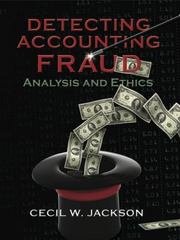Question
Quick Finance is a drive-in financial consulting business where customers park in the parking lot, and employees come by on roller skates to give them
Quick Finance is a drive-in financial consulting business where customers park in the parking lot, and employees come by on roller skates to give them financial advice.
For January, Quick Finance estimates that they will receive 900 customers. The following table summarizes their budgeted costs for January:
| Standards | |
| Direct Labor Cost | 50 $ / hr |
| Total Variable Overhead Cost | $11,250 |
| Total Fixed Overhead Cost | $19,800 |
| Number of Customers | 900 |
| Total Direct Labor Hours | 1,125 hrs |
At the end of January, Quick Finance had incurred the following actual costs:
| Actuals | |
| Direct Labor Cost | $48,000 |
| Total Variable Overhead Cost | $9,600 |
| Total Fixed Overhead Cost | $20,000 |
| Number of Customers | 960 |
| Total Direct Labor Hours | 960 hrs |
Quick Finance uses a full-absorption, normal costing system and allocates its Variable and Fixed overhead based on the number of customers. Quick Finance charges their customers a flat rate per session and as a result, considers the 'units' for their costing system to be customers.
1. What is the Standard Amount (SA) for Variable Overhead (and Fixed Overhead, incidentally)?
a: 1 customer / customer
b: 1 unit / unit, where customers are the 'units'
c: 1 cust. / cust.
d: I get it. It's 1 customer/customer
2. What is the Standard Price (SP) of Variable Overhead?
3. What is the Standard Price (SP) of Fixed Overhead?
4. What is the total cost of sales using full absorption, Normal costing?
Note: Cost of Sales is effectively the COGS for a service company. So this is just asking for the total Normal cost.
5. What is the total cost of sales using full absorption, Actualcosting?
6. What is the difference between the Total Normal Variable Overhead and the Total Actual Variable Overhead(calculate Actual - Normal)?
Note: This is asking for the difference in JUST Variable Overhead, NOT the difference in total cost. Also, the two questions above ask about total cost, just to be as clear as possible.
7. Suppose that Quick Finance is curious about their cost driver for Variable Overhead. What would be the Standard Price (SP) for Variable Overhead if they instead allocated Variable Overhead on the basis of Direct Labor Hours?
8. What would be the Standard Amount (SA) for Variable Overhead if, again, Quick Finance allocated Variable Overhead on the basis of Direct Labor Hours?
9. Again, if Quick Finance allocated Variable Overhead on the basis of Direct Labor Hours, what would be the difference between the Total Normal Variable Overhead and the Total Actual Variable Overhead(calculate Actual - Normal)?
Note: Again, just the difference in Variable Overhead, not total costs.
10. Given your answer to the above questions, what is the right driver for Variable Overhead: customers or direct labor hours?
Step by Step Solution
There are 3 Steps involved in it
Step: 1

Get Instant Access to Expert-Tailored Solutions
See step-by-step solutions with expert insights and AI powered tools for academic success
Step: 2

Step: 3

Ace Your Homework with AI
Get the answers you need in no time with our AI-driven, step-by-step assistance
Get Started


